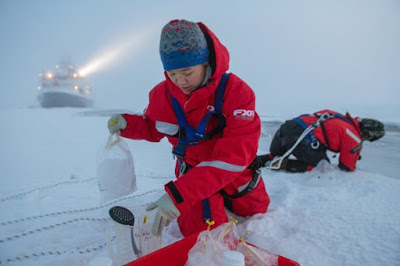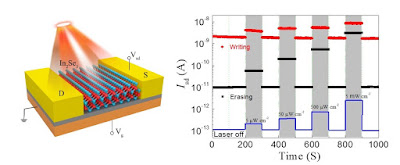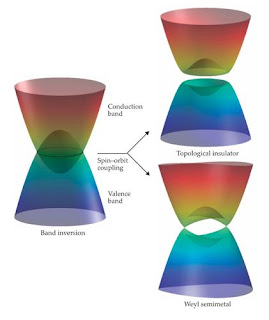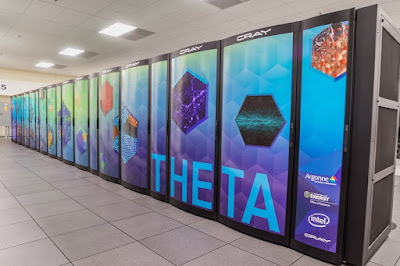 |
| Echo gazes at Narcissus while he longingly peers at his own reflection. J.W. Waterhouse, 1903. Public domain. |
Topics: Civics, Civil Rights, Existentialism, Fascism, Human Rights
One day while hunting, Narcissus comes across an untouched, glassy spring. He is drawn to its beauty and lies down to take a drink, but what he sees in the still water enchants him. He is in love with what he sees and is inflamed by the features of the vision: the hair, his eyes, porcelain skin, and rosy cheeks. Attempts to kiss and hold the reflection are in vain, and Narcissus is only frustrated by the teasing reactions of the image. When Narcissus winks, the image winks back, when Narcissus waves, the image waves, and when he cries tears, he sees that the image also cries. Narcissus cannot understand why he cannot reach what he so desperately desires.
The tormented boy agonizes over his unrequited love. He cannot leave the spring and is trapped in his frozen gaze at his reflection, pining away for the boy in the water who rejects all advances. Then Narcissus realizes that the image is his, but it’s too late, as he has already fallen tragically in love with himself. Knowing that he can never have what he desires, his body withers away in despair. When Narcissus says “Goodbye” to the reflection, Echo’s voice says “Goodbye.” At that moment, Narcissus dies while peering into the spring. Historic Mysteries
*****
The Camp of the Saints (French: Le Camp des Saints) is a 1973 French dystopian fiction novel by Catholic author and explorer Jean Raspail. A speculative fictional account, it depicts the destruction of Western civilization through Third World mass immigration to France and the West. Almost forty years after its initial publication, the novel returned to the bestseller list in 2011. Wikipedia/The_Camp_of_the_Saints The Turner Diaries is a 1978 novel by William Luther Pierce, published under the pseudonym Andrew MacDonald.[1] The Turner Diaries depicts a violent revolution in the United States which leads to the overthrow of the federal government, nuclear war, and, ultimately, a race war leading to the systematic extermination of non-whites.[2][3] All groups opposed by the novel's protagonist, Earl Turner, including Jews, non-whites, "liberal actors" and politicians, are exterminated. Wikipedia/The_Turner_Diaries The Turner Diaries may sound familiar if you recall the Oklahoma City Bombing. Timothy McVeigh had a copy of it in the pickup truck he was discovered in. An army veteran skilled in explosive ordinance disposal (E.O.D.), fashioning a bomb of fertilizer and fuel was a matter of course. The Jewish white nationalist (pxymoron) Steven Miller recommended The Camp of the Saints in several revealed emails to Brietbart. Mr. Miller - a second generation descendant of Jewish refugees from the Nazi pogroms in WWII Poland - and the author of our kiddie concentration camps efficiently "disappearing" and outright killing brown children (24 that we know of).
“Clear direction from POTUS to continue to hold.”
This is what Michael Duffey, associate director of national security programs at the Office of Management and Budget (OMB), told Elaine McCusker, the acting Pentagon comptroller, in an Aug. 30 email, which has only been made available in redacted form until now. It is one of many documents the Trump administration is trying to keep from the public, despite congressional oversight efforts and court orders in Freedom of Information Act (FOIA) litigation.
Earlier in the day on Aug. 30, President Donald Trump met with Defense Secretary Mark Esper and Secretary of State Mike Pompeo to discuss the president’s hold on $391 million in military assistance for Ukraine. Inside the Trump administration, panic was reaching fever pitch about the president’s funding hold, which had stretched on for two months. Days earlier, POLITICO had broken the story and questions were starting to pile up. U.S. defense contractors were worried about delayed contracts and officials in Kyiv and lawmakers on Capitol Hill wanted to know what on earth was going on. While Trump’s national security team thought withholding the money went against U.S. national security interests, Trump still wouldn’t budge.
Thanks to the testimony of several Trump administration officials, we now know what Trump was waiting on: a commitment from Ukraine to investigate Joe Biden.
Kate Brennan
Just Security: Exclusive Unredacted Ukraine Documents Reveal Extent of Pentagon's Legal Concerns
Holding onto the Articles of Impeachment may have been suggested by Professor Lawrence Tribe, but it is by far a masterclass in government dexterity by Speaker Pelosi, who did predict Orange Satan would self-impeach, which he does with every twitchy tweet from the loo.
However, at the voluminous avalanche of lies, he's starting to affect the notions of truth and reality:
Democracy requires that we honor the culture of words. The very idea of democracy is based on the hope that fellow citizens can reason together and find a system for adjudicating differences and solving problems—all of which assumes there is a shared commitment to the integrity of our public words. If you believe words can ennoble, you must also believe they can debase. If they can elevate the human spirit, they can also pull it down. And when words are weaponized by our political leaders and used to paint all opponents as inherently evil, stupid, or weak, then democracy’s foundations are put in peril. Which brings us to the dismal, demoralizing Donald Trump era.
The debasement of words has reached a zenith with the coming of America’s 45th president, who dominates discourse in this country in ways perhaps no other president ever has. And if we hope to repair the damage that’s been done, we need to understand what it is about Trump’s misuse of words that is pernicious and dangerous.
The least problematic part is the sheer banality of Donald Trump’s words. During his presidency, Trump has uttered no beautiful and memorable phrases. His inaugural address, which is a speech normally meant to inspire the citizenry, is remembered, if at all, for the phrase American carnage and Trump’s description of a dystopian nation, broken and shattered. More worrisome is that many of Trump’s utterances are an incoherent word salad. If you read the transcript of many of his interviews and extemporaneous speeches, you often find that Trump is not only unable to lay out a coherent argument; at times he’s unable to string together sentences that parse.
The banality and weaponization of Trump’s words are bad enough, but the greatest cause for concern is his nonstop, dawn-to-midnight assault on facts, truth, reality. That places Trump in a sinister category all his own.
Many politicians are guilty of not telling the full truth of events. A significant number shade the truth from time to time. A few fall into the category of consistent, outright liars. But only very few—and only the most dangerous—are committed to destroying the very idea of truth itself. That is what we have in Donald Trump, along with many of his aides and courtiers. We saw it at the dawn of the Trump presidency, when he insisted—and sent out his press secretary to insist—that the crowd size at his inauguration was larger than that of Barack Obama’s, despite photographic evidence to the contrary. And that behavior has continued virtually every day since.
Trump’s Sinister Assault on Truth: The president appears committed to destroying the very idea of facts.
Peter Wehner, The Atlantic
*****
Democracy depends on a shared set of facts that can be debated in discussed either in a court, on a congressional floor or near a coffee machine at work. It's affable and seeks a happy medium: no one gets everything they desire, but it does require compromise.
Fascism is nothing at all like that. Like George Orwell's famous novel, "1984," fascism requires and demands power for its own sake. It wants what it wants for the sake of wanting. History has no meaning to it at all. Logic and reason have no appeal or sway in people who traffic in "alternative facts" or its Karl Rove precursor: "created realities." Sunshine Fascism...April 12, 2019
*****
At the direction of the President, the U.S. military has taken decisive defensive action to protect U.S. personnel abroad by killing Qasem Soleimani, the head of the Iranian Revolutionary Guard Corps-Quds Force, a U.S.-designated Foreign Terrorist Organization.
General Soleimani was actively developing plans to attack American diplomats and service members in Iraq and throughout the region. General Soleimani and his Quds Force were responsible for the deaths of hundreds of American and coalition service members and the wounding of thousands more. He had orchestrated attacks on coalition bases in Iraq over the last several months - including the attack on December 27th - culminating in the death and wounding of additional American and Iraqi personnel. General Soleimani also approved the attacks on the U.S. Embassy in Baghdad that took place this week.
Top Iranian general killed in US airstrike in Baghdad, Pentagon confirms
Amanda Macias, Joanna Tan, CNBC
At the direction of a president that has lied over 15,000 times since bizarre inauguration, replete with rain ignored and carnage commentary. At the direction of a president that has used racism, sexism, homophobia and xenophobia like a hobbyist would use a socket set. "Soleimani was actively developing plans to attack American diplomats and service members in Iraq and throughout the region" means those plans likely didn't die: they have been inherited by a motivated deputy now promoted. There will be reprisals and escalations in the Near East that will be...biblical. Secretary Clinton's AMER-EXIT to Belfast is telling and foreboding. We're at the direction of a president who many psychological professionals view as a malignant narcissist and devotee of solipsism. No reality is real external to his own disturbed mind. No history has existed save the history he makes in 140 characters. No truth is real except the banal "truthiness" of the moment. His cult minions follow such disturbed mental gymnastics blindly without critique. There is no overarching policy or plan for anything, nor will there ever be, like 140 misspelled characters and retweeted conspiracy theories. It's to change the narrative from impeachment, real-world consequences be damned.
There is a cult industry pre and post the Internet speculating the identity of "the man of sin"; "the son of lawlessness."
- Prophesy enthusiasts postulated Napoleon and Hitler cum Nostradamus, with one consonant rearrangement: Hister, because as with all conspiracy theories, humans look for patterns and invent them whether they're real or not. Saddam Hussein was thrown in for good measure.
- Ronald Wilson Reagan was the evil one because each letter of his names numbered "6."
- Mikhail Gorbachev was him due to his birthmark on his forehead.
- George W. Bush had a website and a book, likely from his membership in Skull and Bones.
My pet name for the 45th president is mostly tongue-in-cheek. However, his following is cheering for Armageddon, and the actions last night have brought us closer to that. There will be a response here, or abroad. The earth does not need humans that draw up treaties and break them with Iranians or Native Americans. The enamor for "end times" has no definition other than "the world coming to an end." The Earth is 40,075.017 km in circumference, 510,072,000 km2 surface area, 1.08321 × 1012 km3 volume, 5.97237 × 1024 kg mass; 5.514 g/cm3. Evolutionary biologists put oxygen-generating photosynthesis some 2.4 billion years ago, evidenced by rust. Humans evolved in Africa 200,000 years ago, migrated away where ultraviolet light wasn't so direct and thus lightened, then defined that natural process as evidence of "superiority." Australia is on fire in their driest summer in the southern hemisphere, fueled by climate change and apathy from science and climate deniers. T.S. Elliot summarized our exit in "The Hollow Men": "This is the way the world ends, This is the way the world ends, This is the way the world ends, Not with a bag, but a whimper." The whimper might be fires, floods and weather we cannot contain, let alone control.
Prior to our entrance on this terrestrial soil, the earth traveled in space around the sun 365.25 days per year more or less without witnesses, scribe, historian, artist or scientist to count 4.5 billion years. The earth does not need us: we need it.
The 2020 Doomsday Clock in this third decade of the 21st century will at least be informative once published.














